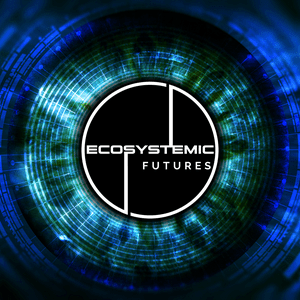109. Mission as Organizing Principle: How Purpose Shapes Ecosystems
Mission functions as a powerful organizing principle in market-based ecosystems. Faisal Hoque, a three-time Deloitte Fast 50 winner and transformation partner to DoD and CACI, reveals how architecting purpose into systematic structures creates a gravitational pull, drawing diverse actors into a coordinated flow. Key insight: exemplary architecture doesn't constrain innovation - it releases latent organizational potential into directed motion.Faisal Hoque, founder of SHADOKA and bestselling author of ten books, including Transcend and forthcoming Reimagining Government, has transformed Mastercard, GE, DoD, DHS, and IBM. His framework shows how leaders architect purpose into systems, generating gravitational force across agencies, partners, and collaborators.Paradigm Shifts:📌 The Personality Paradox: Charismatic leaders' transformations vanish when they leave. Sustainable change embeds innovation into portfolio structures, federated governance, and systematic processes. 📌 Architecting Mission as Gravity: Faisal's "why" question reveals the organizing principle that must be architected into structures. NASA, DoD, and space partners coordinate through strong mission alignment. 📌 Innovation Funnel Inversion: DoD and NASA balance structure with innovation through enterprise portfolios, enabling bottom-up ideation within top-down guardrails.📌 Architecting Trust Through Mission Gravity: Government ecosystems operate on different physics. "Country first" ethos, architected as gravitational center, enables coordination across clearance levels and international partners without traditional controls.Ecosystem Impact:📌 Space Economy Architecture: NASA, Space Force, and commercial operators architect networked collaboration replacing hierarchies. Technology convergence (AI, quantum, autonomous systems) creates gravitational pull across mission partners.📌 Ripple Effect Principle: Innovation cascades across interconnected networks. Responsible transformation requires understanding systemic ripples through the workforce, economy, security, and geopolitical relationships.📌 Generational Convergence: Multi-generational programs face simultaneous workforce transitions and technology shifts. Leadership balances human values with AI-enabled workforces, combining systemic thinking with emotional intelligence.The Hoque-Finkhousen Synthesis: Start with "why" to identify the mission. Then, design it as a gravitational force: systematic structures that enable diverse actors to self-organize around purpose rather than hierarchical control.Guest: Faisal Hoque, Founder SHADOKA, Author, Transformation Partner DoD & CACI Host: Dyan Finkhousen, Founder & CEO, Shoshin WorksSeries Hosts:Vikram Shyam, Founder, Vik Strategic SolutionsDyan Finkhousen, Founder & CEO, Shoshin WorksEcosystemic Futures delivers complex systems foresight by Shoshin Works with heritage from NASA's Convergent Aeronautics Solutions Project.


